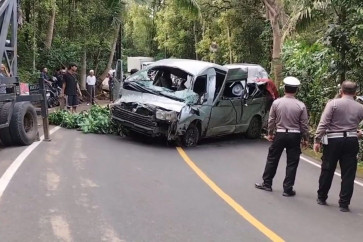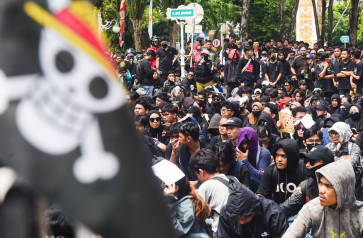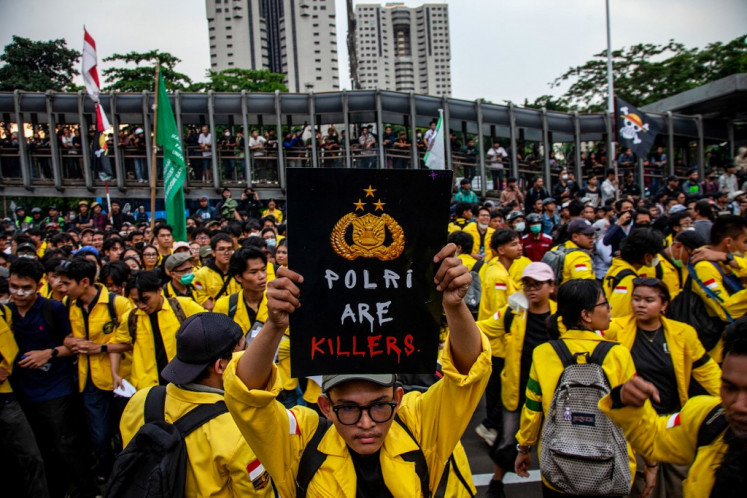Popular Reads
Top Results
Can't find what you're looking for?
View all search resultsPopular Reads
Top Results
Can't find what you're looking for?
View all search resultsASEAN and SCO: Same traditions and missions
The Association of Southeast Asian Nations, widely known as ASEAN, will celebrate its 45th anniversary in August 2012
Change text size
Gift Premium Articles
to Anyone
T
he Association of Southeast Asian Nations, widely known as ASEAN, will celebrate its 45th anniversary in August 2012.
The Shanghai Cooperation Organization (SCO) marked its 10th anniversary in 2011. Both organizations lie at the vast Euro-Asian terrain. The 10 ASEAN member states constitute a southern part of this territory, while the six SCO member states (China, Kazakhstan, Kyrgyzstan, Russia, Tajikistan and Uzbekistan) cover its heartland — the northern and eastern parts.
The most crucial world shipping lanes between the Pacific and the Indian Oceans pass through the ASEAN area to the Atlantic Ocean and Europe. At the same time the SCO area may be called as a land transport corridor connecting the Pacific Basin with Europe and the Atlantic coast.
Despite an “age difference” both unions have already established a chain of dialogue partners and observers among which are the largest and the most powerful states of the modern world.
It is not only the location that naturally brings SCO and ASEAN closer to each other. Generally, they have much in common, including the spirit and similar basic principles.
Neither of the organizations is a military and political block with instruments of compulsion.
Regardless of size and power, all members of both ASEAN and SCO are equal and follow the same consensus principle while adopting the most important decisions. Both multifaceted organizations, being socially oriented, work hard with a view to adequately matching the priorities of domestic development with the necessity to respond continuously to the volatile flow of external challenges and threats.
Financial and economic globalization has embraced almost the entire world. Local crises resonate in all directions and it has become impossible to mitigate them on a national level only. International terrorism fuelled by drug trafficking and separatism, organized crime and illegal migration, kidnapping and human trafficking have achieved a global dimension. Efforts by individual states are obviously insufficient to oppose them.
Both megatrends can only be efficiently reversed through a wide international consensus for risk evaluation and decision-making. The course of events brings new possibilities for international players to unite their efforts if they view problems more or less the same and/or have similar interests, though not in each and every respect.
In this context, it is urgently needed to intensify the implementation of framework agreements on SCO-ASEAN cooperation achieved a few years ago. There is not even a visible obstacle for that. It is time to establish working contacts between them not on occasion but on a regular and institutional basis. Progress in this direction will add substance to the creation of regional architecture on security and multilateral cooperation in Asia-Pacific (AP).
Non-block approaches, equality, transparency, collective principles, non-confrontation and supremacy of universal rules of international law are the pillars of such an architecture. Creating global indivisible security based on mutual understanding, respect and cooperation is largely a reflection of fundamental ideas of philosophy initially inherent to ASEAN and SCO. If the two organizations with observer status in the UN General Assembly come closer, it would not only strengthen their positive international image but also make their shared ideas even more relevant globally.
Cooperation between SCO and ASEAN can develop actively in many, if not all domains of their work. To this end, it is important to organize information exchanges between the Secretariats in Beijing
and Jakarta.
The establishment of contacts between two major working bodies — the Council of National Coordinators of SCO and the ASEAN Senior Officials Meeting — appears quite promising.
Both organizations have either specific programs or specialized structures aimed at combating terrorism, illicit drug trafficking and trans-border crime. For example, the Regional Anti-Terrorist Structure headquartered in Tashkent, Uzbekistan, a permanent body in the SCO framework. SCO has gathered useful practices in countering cyber crime.
Large-scale tasks to create by 2015 involve three communities — namely, political-security, economic and socio-cultural — which are being tackled by ASEAN would undoubtedly be of interest to SCO, as would be the ASEAN Master Plan on ASEAN Connectivity approved in 2010 and aimed at developing transport, information and communication infrastructure of the association. ASEAN could take interest in some practical projects that are being implemented by SCO, including those in cooperation with ESCAP.
The fact that ASEAN and SCO carry out their activities without infringing on the diversity of cultures, religions and values of the peoples living in their member states serves as the common ground for joint efforts. Mutual exchange of relevant experience would help make SCO and ASEAN even more attractive.
The agendas of SCO and the ASEAN Regional Forums have much in common. Both structures will only benefit if the dialogue is established and SCO joins the Forum’s activities as soon as possible.
Over the years, ASEAN has gone through a number of difficult transformation periods, including the enlargement of its original membership. Today, keenly and timely adapting to the world changes, ASEAN is leading the integration processes in Asia-Pacific. Many characteristics and qualities of ASEAN can serve as a worthy and useful example for the SCO, which enters the phase of intensified development in the new decade.
Both organizations can complement each other without prejudice to their independence, self-sufficiency, and specificity. Formally, it can be done on a networking basis. Why not, for example, consider ASEAN becoming an observer at SCO and SCO receiving the ASEAN Dialogue Partner status? What prevents SCO and ASEAN from thinking about SCO’s joining the Bali Treaty? Apparently, there are no fundamental or procedural obstacles to that. Not only ASEAN and SCO, but also the whole cause of designing and creating the security and stability architecture in the Asia-Pacific will benefit from this.
The writer was ambassador of the special envoy of the president of Russia for the SCO Affairs during 2000-2006.










